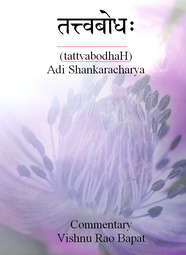Q: I have a couple of questions about ‘I Am That’.
As I understand it, this essentially says: Atman = brahman. So the ‘I’ is not the ahaMkAra ‘I’, rather the Atman ‘I’.
1. Did I get that right?
2. When one begins to reflect upon ‘I Am That’, is one expected to feel the I as the ahaMkAra I? And then move, gradually, towards realizing the I is in fact Atman?
3. The reason I ask (2) is because I have a great deal of difficulty ‘feeling’ my ahaMkAra I. It just doesn’t ‘compute’ with me. Does this brain/body sense things, have feelings, emotions, thoughts; am I aware of external and internal things? Yes! All the time. But are these sensations, feelings, thoughts, etc. = ahaMkAra ‘I-me’? No. They’re just… stuff that happens, electrochemical dances in a brain in a skull in a body that is identified as ‘Jack’ Is this a problem – that I can’t consciously/directly feel my ahaMkAra I? That when I look for it, I see mithyA, nothing of essential substance? Could my not being able to directly experience my ahaMkAra I be a stumbling block? Continue reading →



